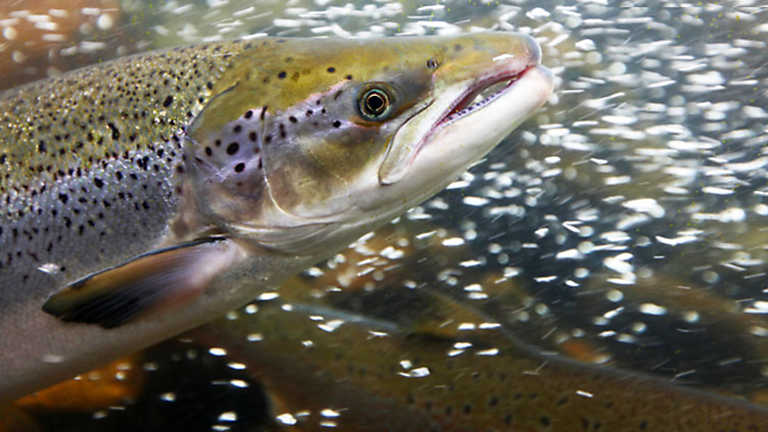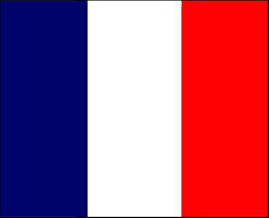Translate This Page
Human activities with regard to animals and their implications (and why we should stop them)
We didn't become vegan in one go: first we stopped eating meat from land animals, then we gave up eggs and milk and finally gave up fish and seafood. It's strange that somehow fish don't get the respect that they deserve: is it because they are just a bit too different from us mammals or because we don't see them in their natural habitat? Perhaps it's because of the myth that they don't feel pain? Whatever the reason, I wish that back then I had looked more closely at the evidence for fish sentience, of which there is plenty. One article that was recently published clearly shows the amazing things that fish are capable of: using tools, reacting to pain, seeking out pleasure, recognising individuals, trusting some, being wary of others etc. http://animalstudiesrepository.org/cgi/viewcontent.cgi?article=1112&context=animsent
So just how much harm do we do to fish and aquatic animals in the mistaken belief that they are not sentient. Well, to be honest it's almost as if we are at war with them...
Fish and aquatic animals are the beings that humans exploit the most. So many fish, crustaceans, molluscs and other aquatic animals are killed, over 167 million tons in 2014 (http://www.fao.org/3/a-i5716t.pdf), that the number of individual lives is measured in trillions, at least a couple of hundred per human being. When fishing we use large nets to scoop them up or miles long lines of hooks to catch them. We let them die by crushing or suffocation or by rupture of their internal organs through pressure change.
We also discard, dead or dying, a large proportion of

what we catch because it's "bycatch", a euphemistic term for the wrong species which can't be sold. These unwanted victims, as well as those caught illegally and in discarded or lost fishing gear, aren't counted in the production statistics, just like the sea birds, dolphins, turtles etc that get caught and killed.
Most of the fish populations in the world are over-fished, yet the warnings from scientists are ignored by the politicians who seem to be under the influence of lobbyists. It's not surprising, as the money involved is staggering: the value of captured fish and aquatic animals was estimated at about 125 billion dollars for 93 million tonnes in 2014. And of course, there are jobs at stake: over 37 million fisher(wo)men in 2014.
Not only are they caught in the wild, fish and aquatic animals are also farmed: aquaculture was estimated at about 160 billion dollars in 2014 for 74 million tonnes. For aquaculture, just like in factory farming, productivity i.e. profit is the most important factor. So the "product" such as fish, molluscs or crustaceans are kept crowded in cages, nets or ponds. They are fed on fish meal made from other species of fish like herring and anchovies. This is putting pressure on stocks of these fish, as well as reducing the food supply for other animals such as dolphins, seals, sea lions, sea birds etc that prey on them. They are also fed on fish food made from crops which people could otherwise eat. Because of their crowded conditions, the animals need pesticides and antibiotics to keep them healthy. Obviously nets and cages don't stop these chemicals from entering the surrounding environment where they may disrupt the ecosystem, just like any excess food and excrement. Nets and cages are vulnerable to storms, breaking and damage from large marine animals which allows farmed animals to escape: these can breed with wild animals and create hybrids less suited for natural conditions.
It's not just money and jobs that are used to justify the exploitation of aquatic animals. It is also claimed that they are an important source of protein, but as the FAO document linked to above shows on page 62, they only contributed 6.6% to global, human consumption of protein in 2013. The truth of the matter is that the world doesn't have a food or protein shortage: it has distribution and use problems. Too much food is grown as crops that are used to feed animals for consumers in rich countries who already eat an excessive amount of proteins. We have been told from a very early age to "eat your meat" and been brainwashed by countless adverts that we need animal proteins and lots of them. It's considered odd if a meal for a special occasion isn't celebrated around a cooked chunk of dead animal. In reality, we need much less protein that we are lead to believe is necessary. The Dietary Reference Intake is 0.8 grams of protein per kilogram of body weight, or 0.36 grams per pound. This is about 56 grams per day for the average sedentary man, 46 grams per day for the average sedentary woman. In North America and Europe the average intake is over 100 grams per day, about twice the recommended amount. Excess protein that the body doesn't need as protein is broken down for energy, about 4 calories per gram. Is this why the regions of the world with some of the highest intakes of protein have the highest obesity rates?
Excess protein intake has also been linked to kidney problems, osteoporosis and cancer. As shown above, there are environmental and moral reasons to not eat fish and aquatic animals. If they don't convince you, perhaps the potential risks to your own health will?
Other interesting links:
- (Intensive) Animal farming and slaughter for meat/organs and other animal products like dairy products and eggs
- (Intensive) Animal farming (Mammals, Birds and Reptiles) for their skin (leather) and fur
- (Intensive) Animal farming for wool
- (Intensive) Goose farming for down
- Fishing and fish farming
- Circuses, Zoos and Marine Parks
- Animal testing and animals used in medical or veterinary universities
- Hunting, canned hunting and trophy hunting
- (Cruel) Animal Sports like bullfighting and other fiestas, cockfighting, horse racing, greyhound racing, sled dogs racing, pigeon racing, pig wrestling, rodeos etc.
- Pets
- Horse and pony riding
- The use of animals in films
- Zoophilia
- Anti-speciesism and climate change
- What can you do?
